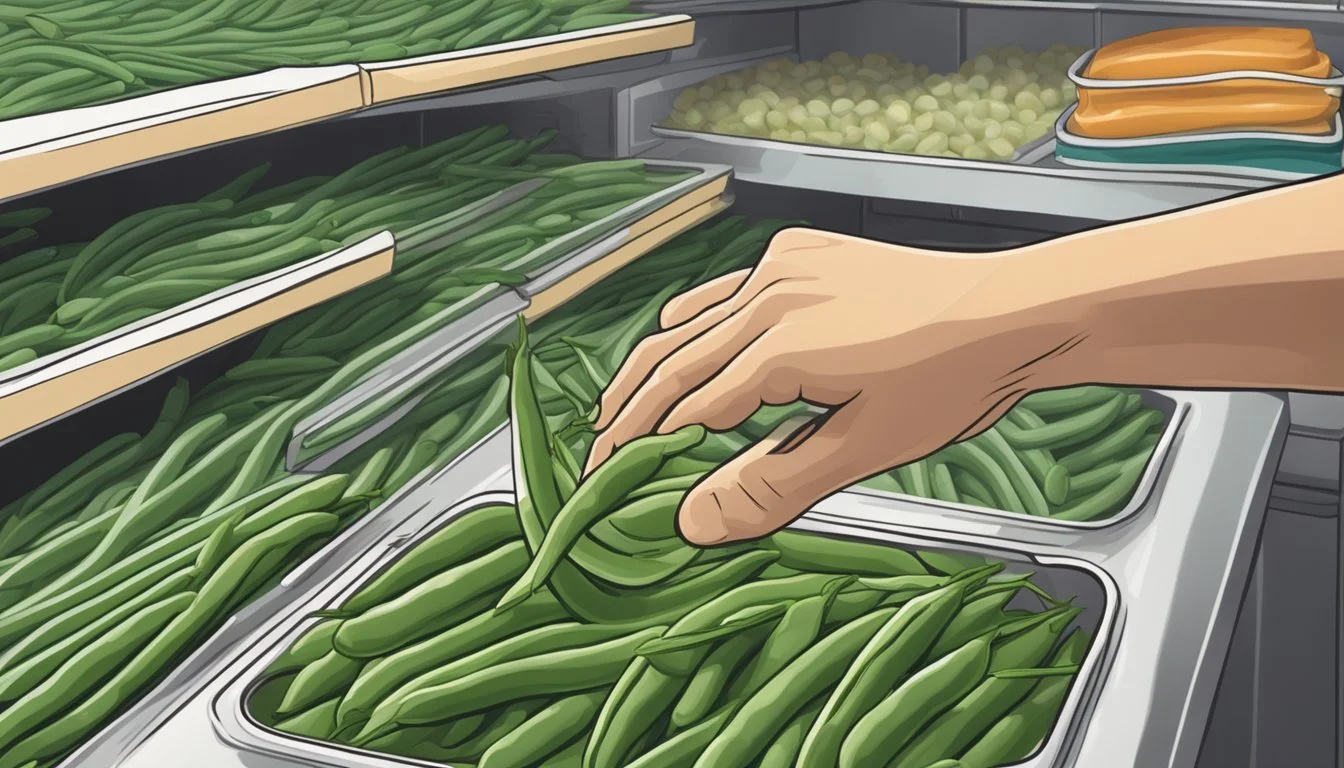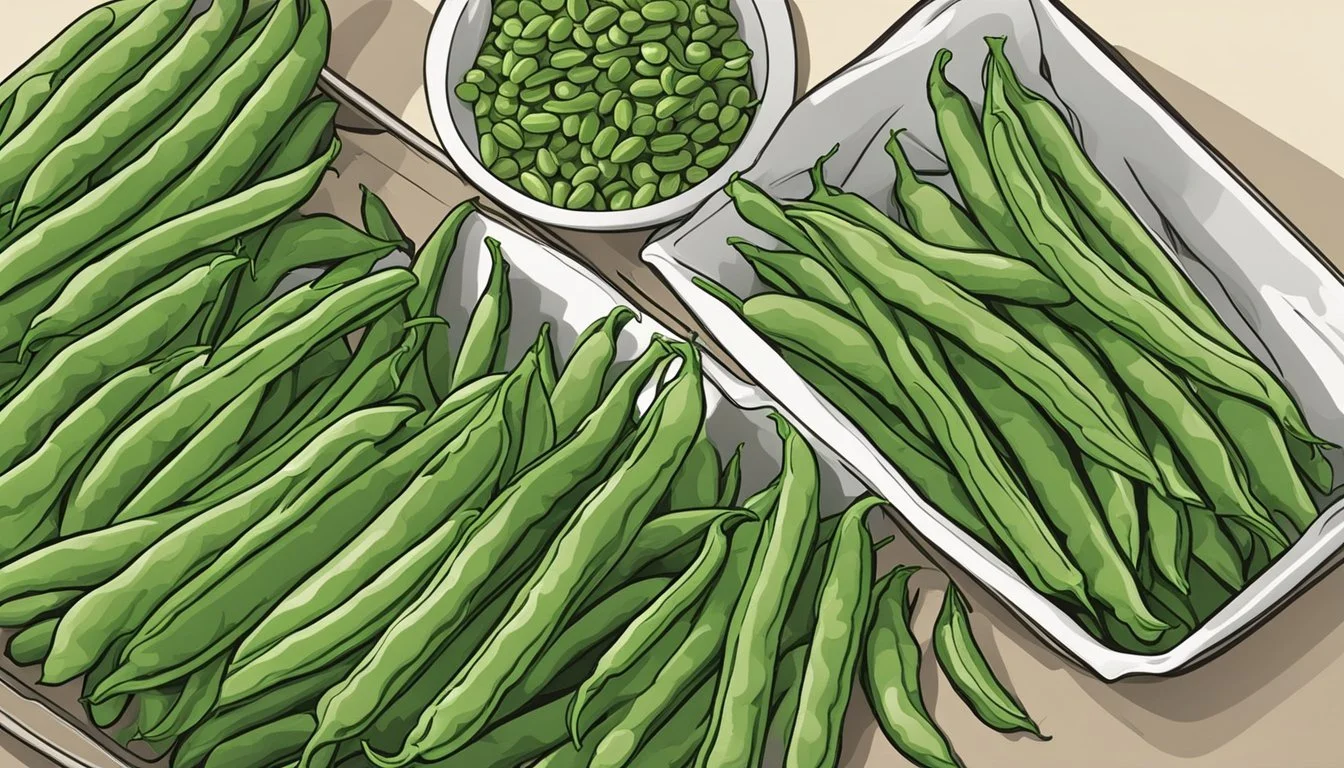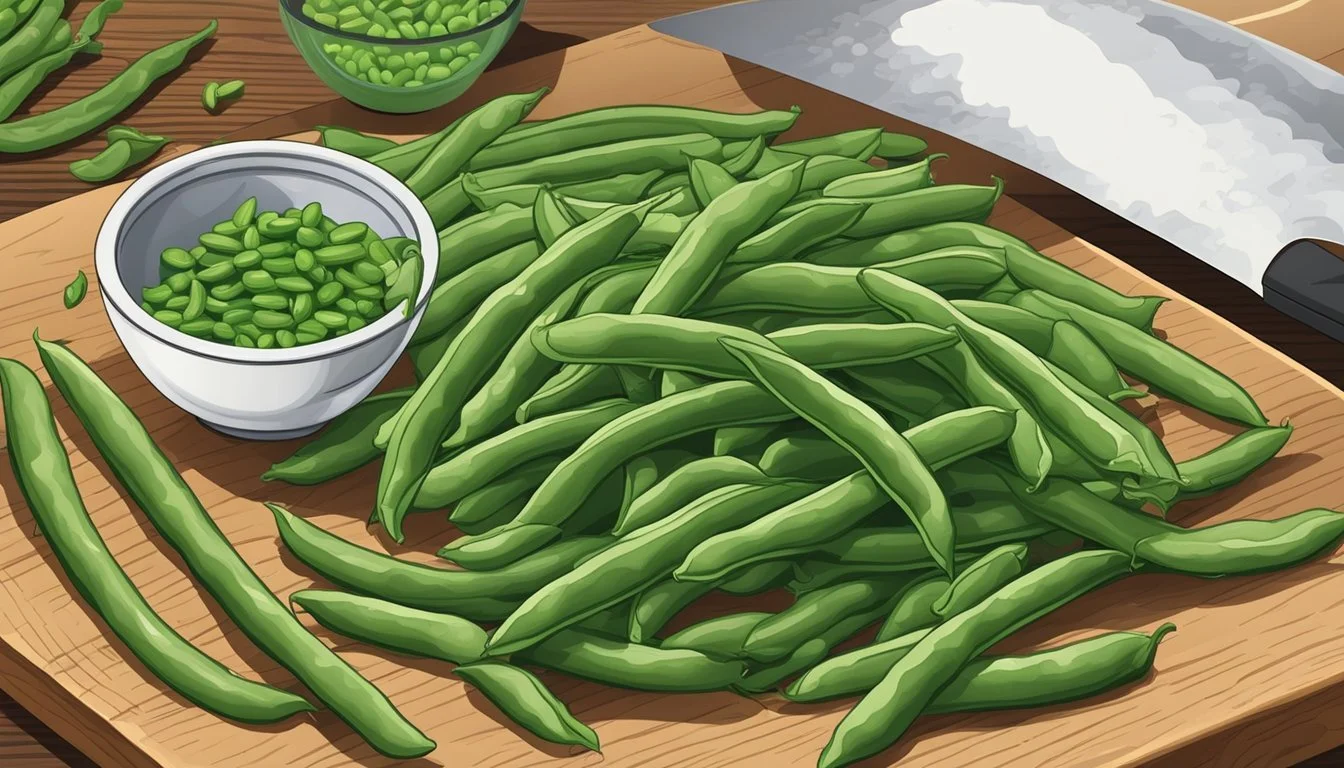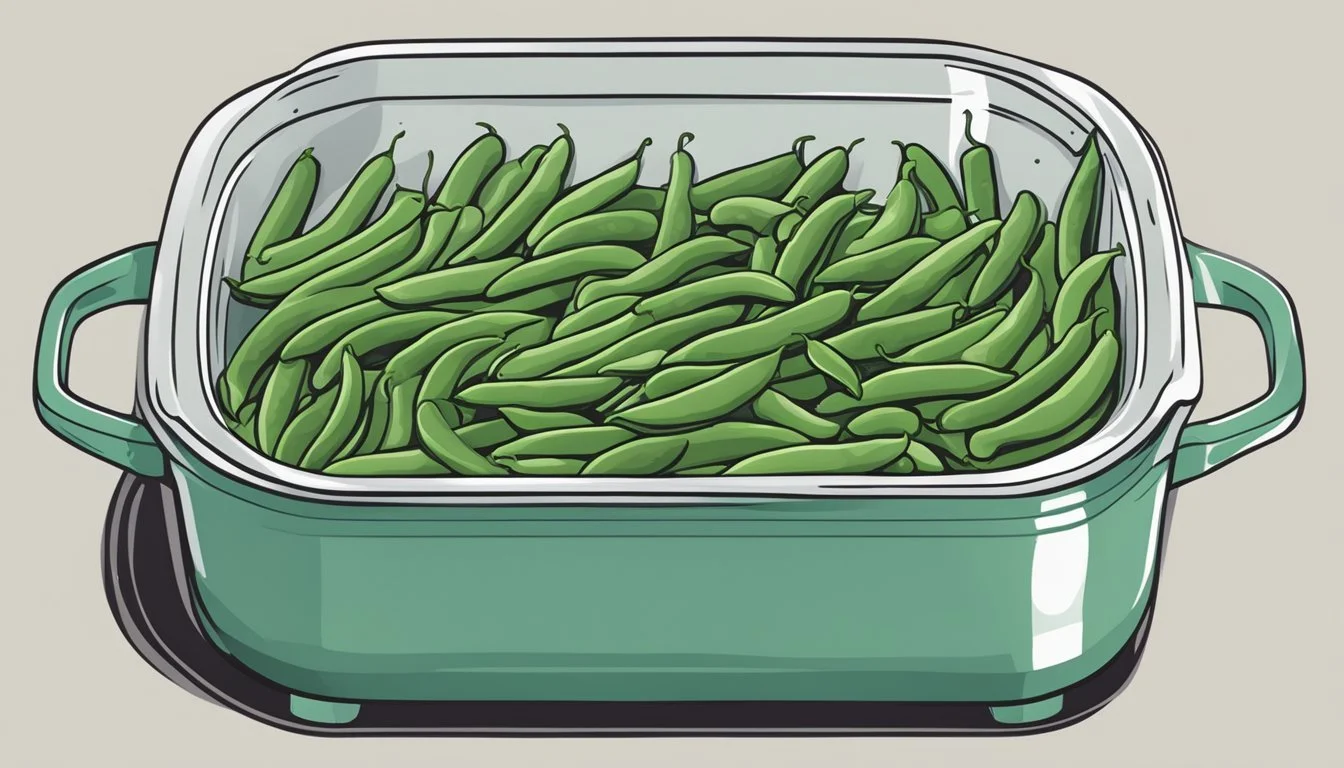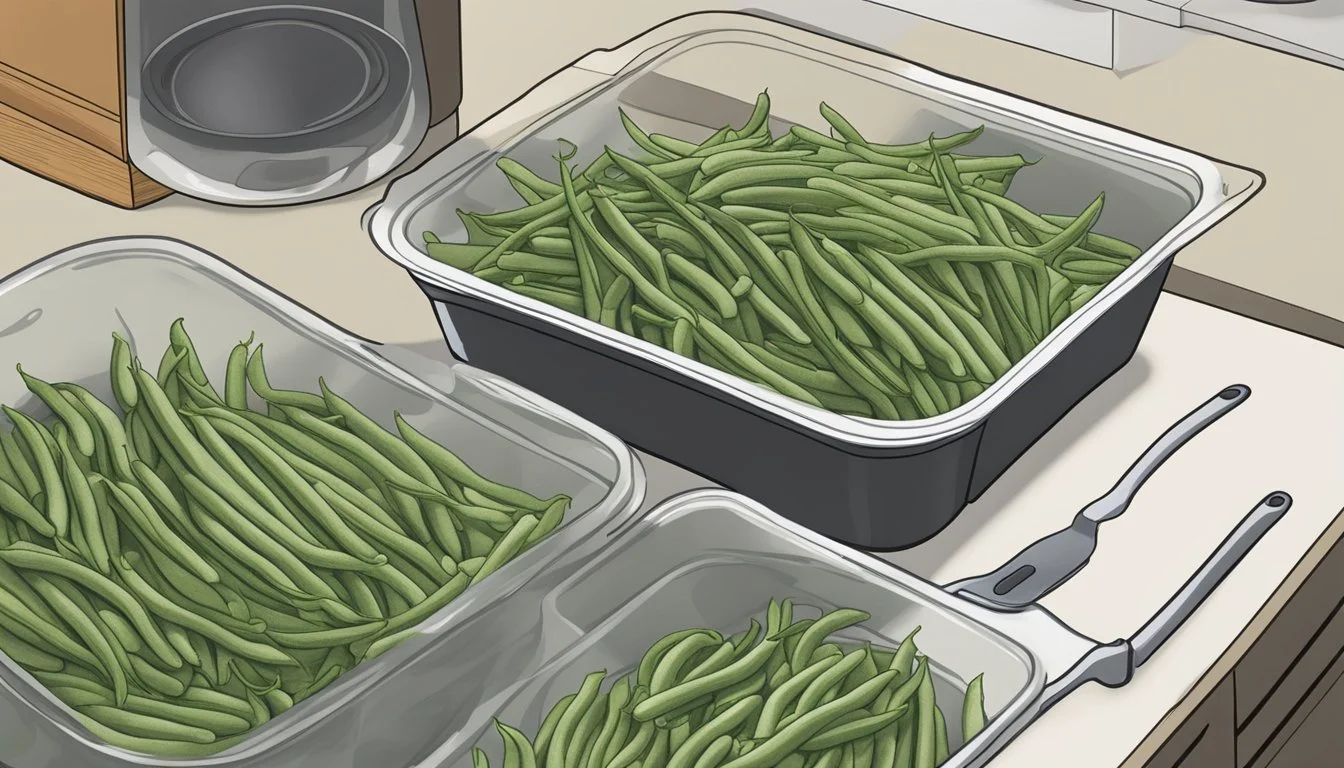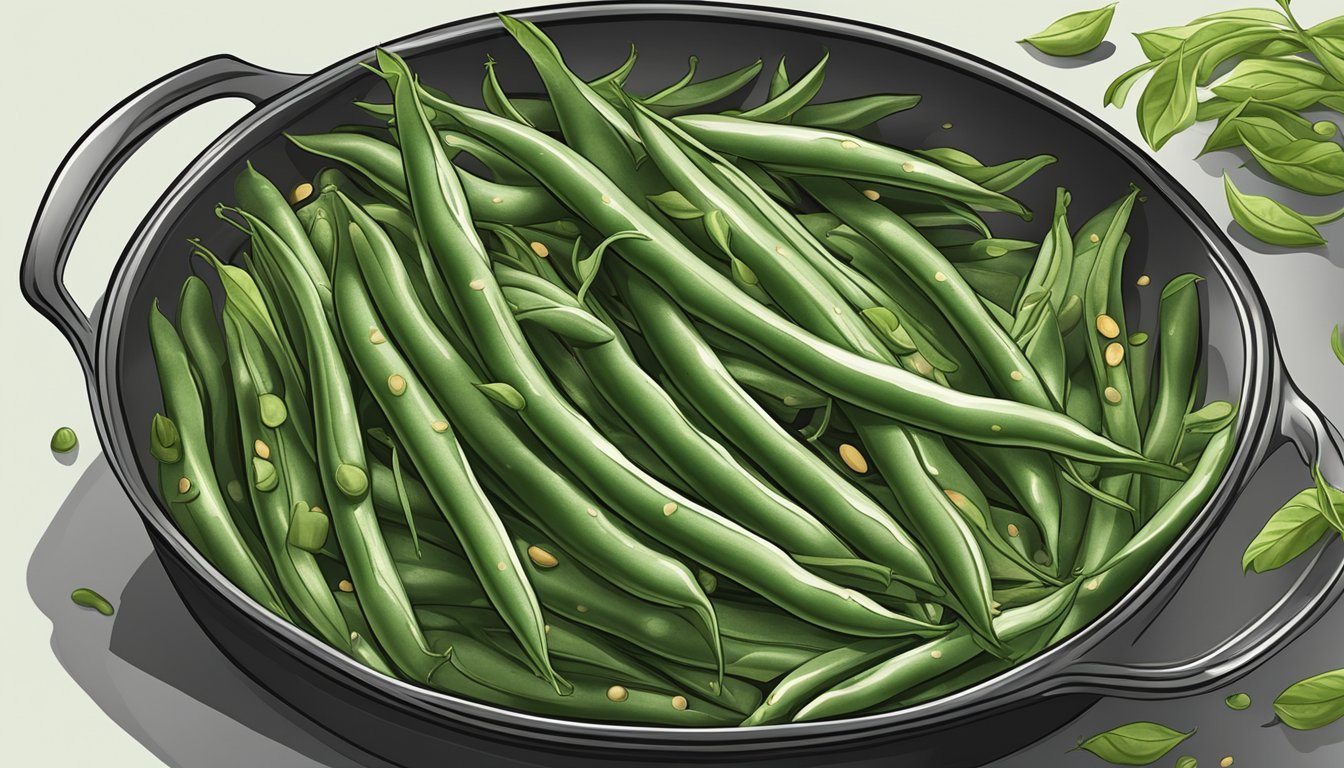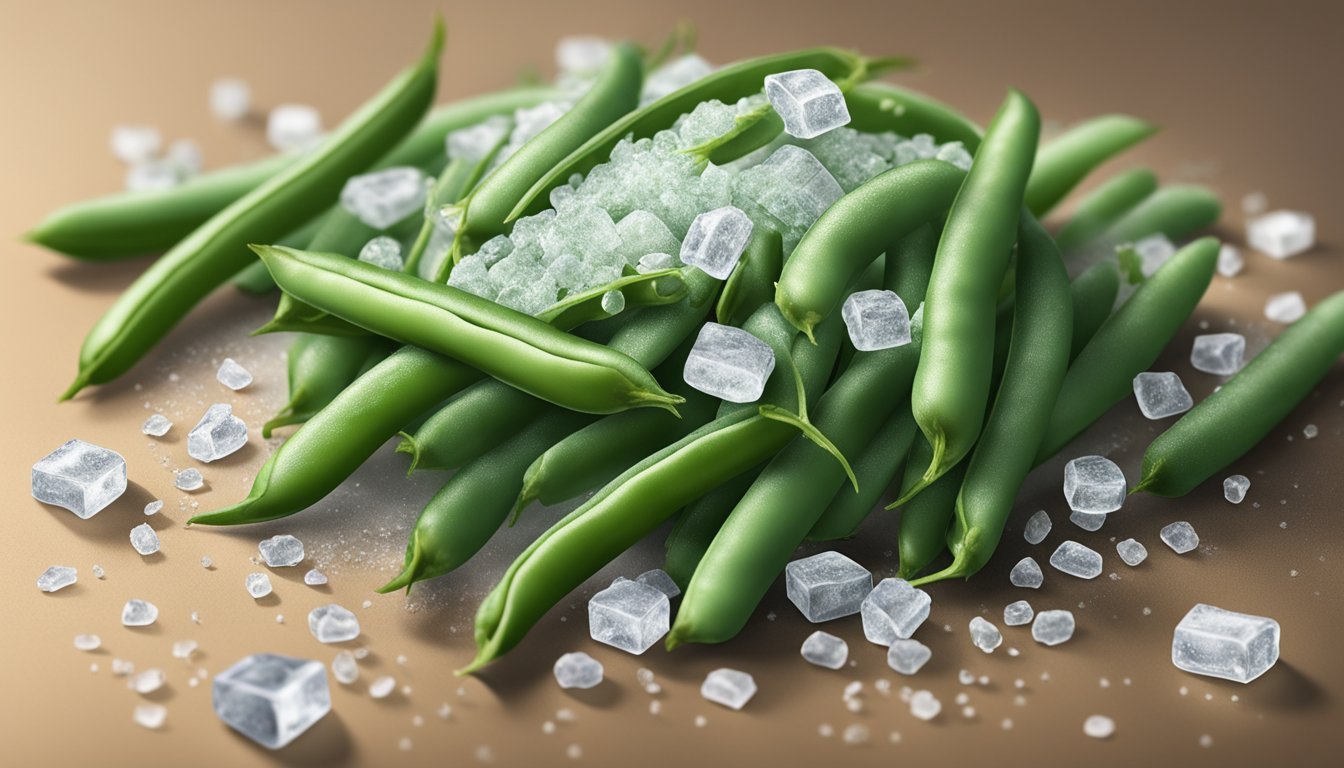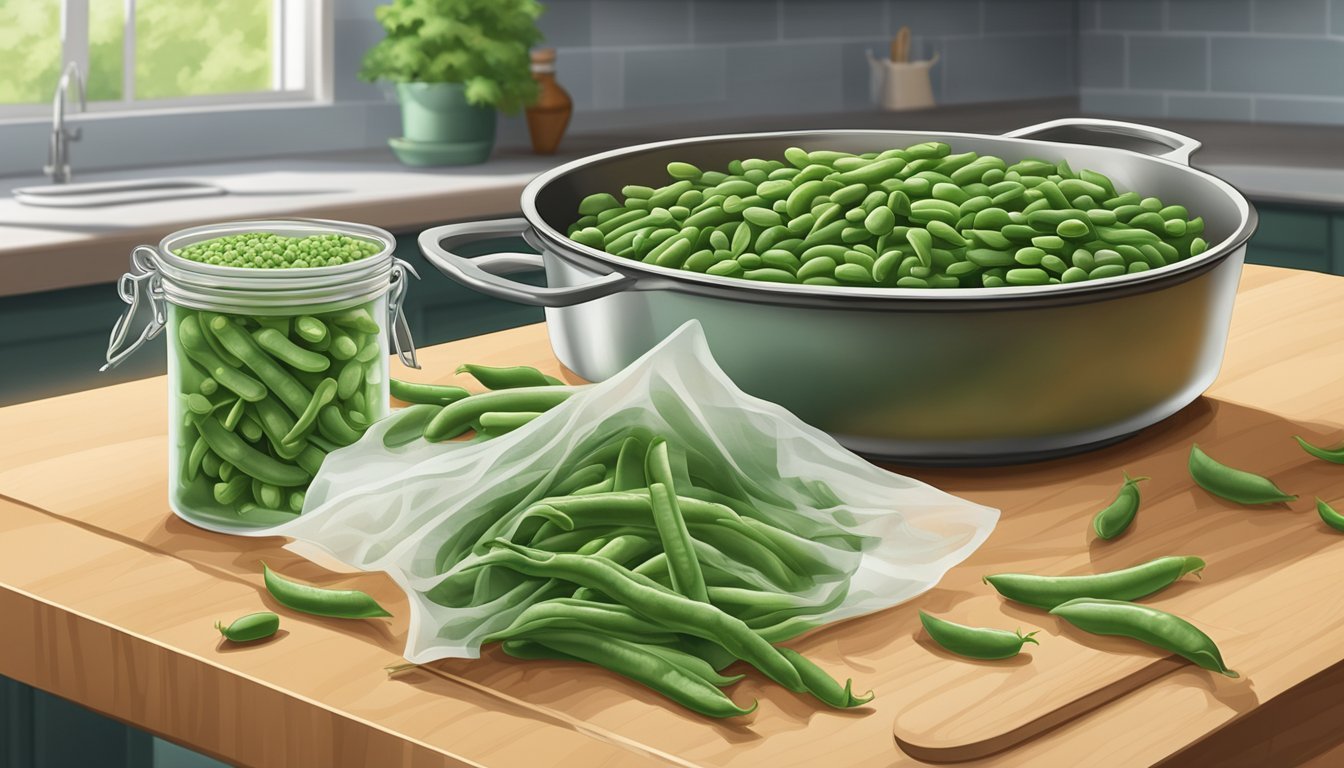Frozen vs Fresh Green Beans for Casserole: Which Makes the Perfect Dish?
Green bean casserole is a beloved holiday side dish that sparks debate among home cooks. The choice between fresh and frozen green beans can significantly impact the final result. Both fresh and frozen green beans can produce excellent casseroles, but frozen beans offer convenience and consistent quality year-round.
Fresh green beans provide a crisp texture and vibrant color when properly prepared. They require more prep work, including washing, trimming, and blanching before use in casserole. Frozen green beans, on the other hand, come pre-cut and blanched, saving time in the kitchen. They maintain their nutritional value and often have a tender texture that works well in casseroles.
Canned green beans are another option, though they tend to be softer and saltier than fresh or frozen varieties. Ultimately, the choice depends on personal preference, time constraints, and seasonal availability. Whichever type of green bean is selected, proper seasoning and complementary ingredients will ensure a delicious green bean casserole for any occasion.
Selecting Green Beans
Green beans come in fresh, frozen, and canned varieties for casseroles. Each option has distinct qualities that affect taste, texture, and preparation time.
Pros and Cons of Fresh Green Beans
Fresh green beans offer the best flavor and crisp texture. They're ideal for achieving tender-crisp results in casseroles.
Pros:
Superior taste and texture
Ability to control cooking time
No added preservatives
Cons:
Require more preparation (washing, trimming)
Shorter shelf life
Seasonal availability may affect price
Fresh beans need trimming before use. Blanching them briefly in boiling water helps maintain their bright green color and crisp texture in casseroles.
Pros and Cons of Frozen Green Beans
Frozen green beans provide convenience and year-round availability. They're often pre-blanched, saving time in casserole preparation.
Pros:
Consistent quality year-round
Pre-trimmed and ready to use
Retain nutrients well
Cons:
Slightly softer texture than fresh
May release excess water if not thawed properly
Can become mushy if overcooked
Thaw frozen beans before adding to casseroles to prevent excess moisture. Drain thoroughly to maintain the desired consistency in the final dish.
Pros and Cons of Canned Green Beans
Canned green beans offer the ultimate convenience but with some trade-offs in texture and flavor.
Pros:
Longest shelf life
No preparation required
Often the most affordable option
Cons:
Softer texture than fresh or frozen
Higher sodium content
May have a slightly metallic taste
Drain and rinse canned beans to reduce sodium. They work well in casseroles where a softer texture is acceptable. Choose low-sodium varieties when possible for better control over the dish's flavor profile.
Preparing the Beans
Proper preparation is crucial for achieving the perfect texture and flavor in green bean casserole. The key steps involve blanching the beans and ensuring they are clean and trimmed.
Blanching Technique
Blanching green beans preserves their vibrant color and crisp texture. Fill a large pot with water and bring it to a rolling boil. Add salt to the water - about 1 tablespoon per gallon.
Carefully lower the beans into the boiling water. Cook for 3-4 minutes until bright green and slightly tender.
Immediately transfer the beans to an ice bath to stop the cooking process. This step is crucial for maintaining the beans' crispness.
Let the beans cool in the ice water for 3 minutes. Drain thoroughly and pat dry with clean kitchen towels or paper towels.
Trimming and Cleaning
Start by rinsing the green beans under cool running water to remove any dirt or debris.
Snap off the stem ends of each bean. For a neater appearance, trim both ends with a sharp knife.
Remove any blemished or discolored parts. Sort through the beans, discarding any that are limp or show signs of decay.
For uniform cooking, cut longer beans into 2-inch pieces. This step ensures even distribution in the casserole.
If using frozen beans, thaw them completely before use. Drain any excess liquid to prevent a watery casserole.
Casserole Essentials
A great green bean casserole relies on a few key elements. These include a creamy mushroom sauce, the right baking dish, and proper oven preparation.
Creating a Creamy Mushroom Sauce
The foundation of a delicious green bean casserole is its creamy mushroom sauce. Start by sautéing sliced mushrooms in butter until golden brown. Add minced garlic for extra flavor. Sprinkle flour over the mushrooms and stir to create a roux. Gradually whisk in milk or cream to form a smooth sauce.
For convenience, cream of mushroom soup can be used as a base. Enhance it with sautéed fresh mushrooms and a splash of milk. Season the sauce with salt, pepper, and a dash of soy sauce for umami depth.
Aim for a consistency that coats the back of a spoon. The sauce should be thick enough to cling to the green beans but not overly heavy.
The Right Casserole Dish
Choosing an appropriate casserole dish is crucial for even cooking and easy serving. A 9x13-inch baking dish is ideal for most recipes. Ceramic or glass dishes work well, distributing heat evenly and retaining it.
Ensure the dish is deep enough to accommodate the green beans and sauce without overflowing. A depth of 2-3 inches is typically sufficient.
Grease the dish lightly with butter or cooking spray to prevent sticking. This also makes clean-up easier after serving.
Preheat Oven and Baking Time
Proper oven preparation is essential for a perfectly cooked casserole. Preheat the oven to 350°F (175°C). Allow sufficient time for it to reach the correct temperature before placing the casserole inside.
Most green bean casseroles require 25-30 minutes of baking time. Cover the dish with foil for the first 20 minutes to prevent the top from browning too quickly. Remove the foil for the last 5-10 minutes to allow the top to become golden and crispy.
The casserole is done when it's hot and bubbly around the edges. A knife inserted into the center should come out hot. Let it rest for 5 minutes before serving to allow the sauce to set slightly.
Layering the Casserole
Proper layering ensures a delicious green bean casserole with well-distributed flavors and textures. The key is to arrange the beans and sauce evenly before adding toppings like cheese and crispy onions.
Arranging Beans and Sauce
Start by spreading half of the green bean mixture in the bottom of a greased casserole dish. Use a spatula to create an even layer. Pour half of the cream of mushroom soup over the beans, ensuring it's distributed evenly. Repeat with another layer of green beans and the remaining sauce.
For extra flavor, sprinkle each layer with a pinch of salt and pepper. This method allows the sauce to coat all the beans thoroughly, resulting in a more flavorful dish.
Adding Cheeses and Onions
Sprinkle shredded cheddar cheese over the top layer of beans and sauce. Use about 1 cup for a standard 9x13 inch casserole. Add grated parmesan cheese for a sharper flavor profile.
Top the cheese layer with crispy fried onions or French fried onions. Use 1 to 1.5 cups, depending on preference. Press them lightly into the cheese to help them adhere.
For a variation, mix some of the cheese and onions into the bean layers. This creates pockets of flavor throughout the casserole. Reserve some for the top to ensure a crispy, golden-brown crust when baked.
Toppings and Texture
Toppings play a crucial role in green bean casseroles, adding delightful crunch and flavor. The right toppings can elevate the dish from ordinary to extraordinary.
Making Crispy Fried Onions
Crispy fried onions are a classic topping for green bean casserole. To make them at home, thinly slice onions and coat them in seasoned flour.
Fry the coated onions in hot oil until golden brown and crispy. Drain on paper towels to remove excess oil.
Store-bought fried onions are a convenient option, but homemade ones offer superior flavor and texture. They add a savory crunch that contrasts beautifully with the creamy casserole base.
For extra flavor, try mixing different onion varieties like sweet onions and shallots.
Breadcrumbs and Parmesan for Crunch
Breadcrumbs and Parmesan cheese create a deliciously crunchy topping alternative. Mix panko breadcrumbs with grated Parmesan, melted butter, and herbs.
Sprinkle this mixture over the casserole before baking. It will turn golden brown and crispy in the oven.
This topping adds a rich, cheesy flavor and satisfying crunch. For best results, use freshly grated Parmesan rather than pre-grated varieties.
Experiment with different breadcrumb types, such as whole wheat or seasoned, to vary the flavor profile.
Cooking Approaches
Green bean casserole can be prepared using various cooking methods, each offering unique advantages. The choice of technique impacts texture, flavor development, and convenience.
Conventional Oven Method
Preheat the oven to 350°F (175°C). Combine thawed frozen green beans or fresh trimmed beans with mushroom soup and milk in a casserole dish. Mix well and top with crispy fried onions. Bake uncovered for 25-30 minutes until bubbly.
For extra crispiness, broil for 2-3 minutes at the end. Total time: approximately 40 minutes. This method produces a classic green bean casserole with a golden-brown top and tender beans.
Slow Cooker Variation
Grease the slow cooker insert. Add green beans, soup mixture, and half the fried onions. Cook on low for 4-5 hours or high for 2-3 hours. Stir occasionally to ensure even cooking.
Add remaining onions during the last 10 minutes. This hands-off approach is ideal for freeing up oven space. The extended cook time allows flavors to meld beautifully.
Microwave Instructions
Place green beans and soup mixture in a microwave-safe dish. Cover and cook on high for 8-10 minutes, stirring halfway through. Add fried onions and microwave uncovered for 2-3 more minutes.
Let stand for 5 minutes before serving. Total time: about 20 minutes. This method is quickest but may result in slightly less crispy onions. It's perfect for small batches or last-minute preparation.
Advanced Prep and Storage
Preparing green bean casserole ahead of time can save effort during busy periods. Proper storage techniques ensure the dish remains fresh and delicious.
Making Casserole Ahead of Time
Green bean casserole can be assembled up to 24 hours before baking. Prepare the green beans and mix with the soup and other ingredients. Place the mixture in a baking dish, cover tightly with plastic wrap, and refrigerate.
Add the crispy onion topping just before baking to prevent sogginess. When ready to cook, remove the casserole from the refrigerator 30 minutes prior to allow it to come to room temperature.
This method saves time on the day of serving and allows flavors to meld.
Refrigeration Tips
Store leftover green bean casserole in an airtight container in the refrigerator. It will keep for 3-4 days when properly stored.
To reheat, place the desired portion in a microwave-safe dish and heat in 30-second intervals, stirring between each, until warmed through.
For larger portions, reheat in the oven at 350°F (175°C) for about 20 minutes or until hot. Cover with foil to prevent excessive browning.
Freezing and Reheating
Green bean casserole can be frozen for up to 3 months. Freeze the base mixture without the crispy onion topping for best results.
Allow the casserole to cool completely before transferring to a freezer-safe container. Label with the date and contents.
To reheat, thaw in the refrigerator overnight. Transfer to a baking dish, add fresh crispy onions, and bake at 350°F (175°C) for 30-40 minutes or until hot and bubbly.
For individual portions, freeze in small containers for easy reheating.
Serving Suggestions
Green bean casserole is a versatile holiday side dish that pairs well with various main courses. It's particularly popular as a Thanksgiving side dish, complementing roast turkey perfectly.
For a traditional holiday table, serve the casserole alongside other classic sides like mashed potatoes, cranberry sauce, and stuffing. The creamy texture and crispy onion topping provide a delightful contrast to these dishes.
When serving a larger crowd, consider doubling the recipe and using a larger baking dish. This ensures there's plenty for everyone to enjoy, with potential leftovers for the next day.
To add visual appeal, garnish the casserole with additional crispy fried onions and a sprinkle of fresh herbs like thyme or parsley before serving. This enhances both the presentation and flavor.
For portion control, a standard 9x13 inch casserole typically serves 8-10 people as a side dish. Adjust accordingly based on the number of guests and other dishes being served.
To keep the casserole warm during a buffet-style meal, transfer it to a slow cooker set on low heat. This maintains the optimal temperature without overcooking the green beans.
Accompaniments and Variations
Green bean casserole pairs well with various side dishes and can be customized to suit different tastes. Creative additions and complementary foods enhance the overall meal experience.
Complementary Side Dishes
Sweet potato casserole offers a delightful contrast to green bean casserole. Its sweet, creamy texture balances the savory beans and crispy onions.
Corn casserole provides a golden, buttery companion that complements the green beans' earthiness. The combination creates a colorful plate with diverse flavors and textures.
Mashed potatoes serve as a classic side dish alongside green bean casserole. Their smooth consistency and mild flavor allow the casserole's taste to shine.
Cranberry sauce adds a tart and sweet element to the meal. Its vibrant color and fruity notes cut through the richness of the casserole.
Creative Variations to Try
Adding bacon bits to the casserole mixture introduces a smoky flavor and extra crunch. Sprinkle them on top before baking for maximum impact.
Incorporating sliced almonds or chopped pecans provides a nutty taste and additional texture. Mix them into the casserole or use as a topping.
Experimenting with different cheese varieties can transform the dish. Try sharp cheddar, Gruyère, or Parmesan for unique flavor profiles.
Mixing in sautéed mushrooms enhances the umami taste. Use a variety of mushrooms like shiitake, cremini, or oyster for added depth.
Topping the casserole with panko breadcrumbs creates an extra crispy layer. Season the breadcrumbs with herbs like thyme or rosemary for aromatic flair.
Nutritional Considerations
Green bean casserole's nutritional profile varies depending on ingredient choices. Fresh and frozen green beans offer similar nutrients, but preparation methods impact the overall healthfulness of the dish.
Calorie Information
A typical serving of green bean casserole contains 150-250 calories. Fresh or frozen green beans contribute minimal calories, around 30-40 per cup. The bulk of calories come from added ingredients. Cream-based sauces and fried onion toppings significantly increase calorie content.
Unsalted butter adds about 100 calories per tablespoon. Whole milk contributes 150 calories per cup. Reducing these high-calorie components can lower the dish's overall calorie count.
Dietary Adjustments
Green bean casserole can be adapted for various dietary needs. For gluten-free versions, replace wheat flour with cornstarch or gluten-free flour blends. Substitute soy sauce with tamari for a gluten-free alternative.
For lower sodium options, use low-sodium broths and reduce added salt. Garlic powder provides flavor without extra sodium. To decrease fat content, use low-fat milk instead of whole milk and reduce butter quantities.
Plant-based versions can use non-dairy milks and vegan butter substitutes. These changes maintain the dish's creamy texture while accommodating dietary restrictions.


